Keeping client and patient appointments running smoothly takes organization and planning. Sending appointment reminder cards is an important touch that provides a professional courtesy while confirming scheduled visits and reducing late cancellations or no-shows. This article will explore the many benefits appointment cards offer businesses and medical practices. We’ll discuss how customized appointment cards can establish your brand, showcase your style, and help your office run more efficiently.
To make designing appointment reminder cards easy, we’ve included free, printable appointment card templates in a range of styles. With these templates, you can quickly customize attention-grabbing appointment reminders that impress clients and patients. Read on to learn more about crafted appointment cards that demonstrate your business is reliable, classy, and appreciates your customers’ time. Let’s get started designing appointment cards that keep your calendar running seamlessly.
Table of Contents
What Is Appointment Reminder Cards?

Appointment reminder cards are notices sent by businesses and medical offices to confirm scheduled appointments with clients or patients. These cards typically include important details like the customer’s name, date and time of the appointment, the service provider’s company name, address, and contact information. Appointment reminders are sent out a few days or weeks prior to the appointment date to remind customers of the booking while providing a courteous confirmation.
Sending professional appointment cards reduces no-shows, late cancellations, and mistakes about appointment times. Customized with the business’s branding and colors, appointment reminder cards also establish the company’s style and reliability. For both service providers and customers, appointment cards are an important tool for organization and convenience.
Appointment Card Templates
Scheduling appointments is a key part of running any business. Sending professional appointment reminder cards ensures customers don’t forget their upcoming appointments. An appointment card template makes designing and printing cards quick and easy.
The template contains a standard appointment card layout you can fully customize. It includes space for your business name, logo, contact information, and the appointment details. Customize the template by uploading your own images, logos, or color scheme that represents your brand.
An appointment card template allows you to instantly merge customer names, dates, and times from your database or spreadsheet. Within minutes, you can generate and print customized appointment reminder cards for all your clients. The template does the formatting work for you so all your cards have a polished, consistent look. With a professional yet personalized appointment card, your customers will arrive on time and prepared for their appointment.
Why Are Appointment Cards Important?
Appointment cards are tangible reminders of upcoming appointments, engagements, or events, and while they may seem simplistic in nature, their significance runs deep in both professional and personal contexts. Here are some detailed reasons why appointment cards are important:
- Memory Aid: Despite technological advancements, our brains can’t always retain every piece of information. Appointment cards act as a physical cue, helping to jog our memory about upcoming events or tasks.
- Professionalism: For businesses and professionals, offering appointment cards demonstrates organization and a commitment to customer service. It conveys to clients that you value their time and wish to minimize any confusion or forgetfulness.
- Tangibility: Digital reminders are prevalent, but there’s something about a physical card that makes an impression. The act of writing, handing over, and receiving a card can reinforce the importance of the appointment.
- Reduction of No-shows: Missed appointments can be costly for businesses. Appointment cards can significantly reduce the number of no-shows by ensuring that clients have a constant reminder of their upcoming appointment.
- Building Trust: When a service provider gives out an appointment card, it fosters trust. The client feels assured that the provider is prepared and committed to honoring the scheduled time.
- Serves as a Reference: Beyond just the date and time, appointment cards can contain other vital information such as the location, the person you’re meeting with, necessary preparations, or contact details. This quick reference is handy, especially if one needs to reschedule or clarify any details.
- Promotion and Branding: Appointment cards often carry the logo or brand name of the service provider. This acts as a subtle form of branding every time a client looks at the card. Some businesses even take this a step further by designing aesthetically pleasing cards that clients might want to keep even after the appointment, further enhancing brand recall.
- Personal Responsibility: For the person receiving the card, it serves as a commitment tool. Having a physical card can instill a sense of personal responsibility to honor the commitment, be it a doctor’s appointment, a business meeting, or a service schedule.
- Minimizes Disruptions: Consistent reminders and clarity about appointments can help minimize disruptions in day-to-day operations, especially in settings like medical clinics, salons, or consultancy services where a streamlined flow of clients is crucial.
- Sustainability and Eco-friendliness: With a move towards sustainability, many businesses now opt for eco-friendly materials for their appointment cards. This not only reduces environmental impact but also communicates a company’s values to its clients.
- Creates a Personal Touch: In an era dominated by digital communication, the personal touch of a handwritten or hand-given card can make clients feel special and valued.
- Facilitates Time Management: For individuals, having a physical card allows for better personal time management. It can be placed in a visible location, like on a fridge or desk, as a daily reminder.
- Cost-Effective: Producing appointment cards is relatively inexpensive, yet the returns—in terms of brand visibility, reduced no-shows, and enhanced customer service—can be significant.
Different Types of Appointment Cards
Here are some types of appointment cards, along with detailed explanations and examples for each:
Standard Business Card Size Appointment Cards:
These are the most common type of appointment cards, mirroring the size of a standard business card. This makes them convenient to store in wallets, purses, or cardholders. Typically, one side of the card will feature the business’s logo, contact information, and address, while the other side will be reserved for appointment details.
Example: A dentist’s office might use a standard business card size for its appointment cards. The front side displays the clinic’s logo, contact number, and address. The reverse side has spaces for the date and time of the next appointment, along with a short reminder to floss daily.
Magnetic Appointment Cards:
These cards come with a magnetic strip on one side, allowing clients to stick them on metallic surfaces like refrigerators or metal cabinets. This feature ensures that the appointment remains visible, reducing the chances of forgetting about it.
Example: A pet grooming service provides magnetic appointment cards. Clients can stick these cards on their refrigerators, ensuring they don’t forget their pet’s next grooming session. The card also features a cute picture of a groomed dog to add appeal.
Digital/Electronic Appointment Cards:
With the rise of digitalization, many businesses are moving towards sending electronic appointment reminders via email or text message. These digital cards can be synced with calendar applications and can provide real-time notifications or reminders.
Example: A physiotherapy clinic offers clients the option to receive digital appointment reminders. When a client schedules a session, they receive an email with a link that, when clicked, automatically adds the appointment to their preferred digital calendar, setting up reminders a day and an hour before the scheduled time.
Loyalty Combo Appointment Cards:
Some businesses combine appointment cards with loyalty programs. These cards not only remind clients of their appointments but also track the number of visits, offering rewards after a certain number.
Example: A local spa provides a card where every appointment is stamped. After ten appointments, the client receives a free massage. The card also has space to note down the date and time of the next appointment.
Foldable Appointment Cards:
These are slightly larger cards that can be folded in half. The advantage of the increased size is that it provides more space for information, instructions, or promotional content.
Example: A hair salon offers foldable appointment cards. Inside the fold, there are care tips for maintaining hair health and a coupon for a discount on the client’s next visit. On the back, there’s room to write down the date and time of the next appointment.
Multiple Appointment Cards:
For services that require frequent visits within a short span, cards can be designed with space for multiple appointments. This eliminates the need to issue a new card after each visit.
Example: A skin clinic treating acne issues might provide a card with spaces for six appointment dates, as the treatment plan demands bi-weekly visits. This card helps the patient keep track of their treatment progress.
Veterinary Appointment Card Template:
Designed specifically for pet clinics and veterinary hospitals, these templates often incorporate pet-friendly designs, images of animals, and space for specifics like type of vaccination or check-up.
Example: A veterinary hospital might use this card, which includes sections for the pet’s name, breed, upcoming vaccinations, and dietary or care recommendations.
Fitness & Wellness Appointment Card Template:
These cards are geared towards gyms, yoga studios, personal trainers, and wellness centers. They often incorporate energetic color schemes, images of fitness activities, and space for session specifics.
Example: A personal trainer might have cards displaying workout icons, with sections to mention the focus of the next training session, such as “Cardio” or “Strength Training.”
Educational Appointment Card Template:
Used by tutors, schools, and other educational institutions, these templates focus on learning. Designs might feature books, educational symbols, and space for subjects or areas of focus.
Example: A math tutor could use this template, detailing the topics to be covered in the next session and any preparatory assignments for the student.
Spa & Beauty Appointment Card Template:
Designed with relaxation and aesthetics in mind, these templates are perfect for beauty parlors, massage therapists, and spas. They typically have calming colors, images of beauty or relaxation treatments, and spaces for treatment specifics.
Example: A massage therapy center might have cards showcasing soothing colors and icons of different massage techniques, such as “Swedish” or “Deep Tissue.”
Automotive Appointment Card Template:
Geared towards car repair shops, mechanics, and auto service centers, these templates often feature car-related designs, tools, and sections for specific service details.
Example: A car service center might use this card with sections highlighting the type of service scheduled, be it an oil change, tire rotation, or comprehensive vehicle check-up.
Dental Appointment Card Template:
Tailored for dental clinics, these cards often come in calming colors, considering the anxiety many have towards dental visits. They have tooth or smile designs and spaces for the type of procedure.
Example: An orthodontist’s office might have cards showcasing images of braces or aligners, with a section mentioning the next step in the treatment, like “Brace Tightening” or “New Aligner Set.”
Event & Photography Appointment Card Template:
Ideal for event planners and photographers, these templates highlight the visual aspect of their services. They often have space for event type, location specifics, and theme details.
Example: A wedding photographer might have an appointment card showcasing a camera and sections detailing the type of shoot, such as “Pre-Wedding,” “Ceremony,” or “Reception.”
How Do I Make An Appointment Card?
Creating an effective appointment card requires thoughtful consideration of both design and content. Here’s a step-by-step guide to help you make an appointment card:
Step 1: Determine the Purpose and Type
Before diving into design elements, decide on the primary function of the card. Do you want a basic card with just date and time, or do you want to integrate other features like loyalty stamps, promotional details, or care instructions? Also, decide on the type: standard, magnetic, digital, foldable, etc.
Example: A chiropractic clinic might choose a standard business card size with added space for care instructions after a session.
Step 2: Choose the Size and Orientation
The size and orientation (landscape or portrait) of your card will depend on the amount of information you want to include and your aesthetic preferences. Standard business card sizes are popular due to their convenience, but if you have more to say, you might opt for a foldable design or a slightly larger card.
Example: A boutique fashion store offering personalized styling sessions might choose a portrait-oriented card that aligns with their brand’s sophisticated look.
Step 3: Design the Front Side
The front side of the card typically carries the business’s branding elements. This includes the company logo, name, contact information, and address. Ensure the design aligns with your business’s overall branding for a consistent look and feel. Using a high-quality logo and keeping the design clean will make the card look professional.
Example: A high-end spa would ensure their logo, name in an elegant font, and contact details are displayed clearly and stylishly on the front.
Step 4: Design the Back Side
The back side is where appointment details will go. Create designated spaces for the date, time, and possibly the service provider’s name. Depending on your business, you might also want to add a brief reminder or instructions related to the appointment.
Example: A dental clinic might include sections for date, time, dentist’s name, and a note reminding patients to arrive 10 minutes early for initial paperwork.
Step 5: Choose Material and Finish
The quality of the cardstock and finish can make a significant difference in the card’s appeal. Decide whether you want a glossy or matte finish. If sustainability is a concern for your brand, consider using recycled materials.
Example: An eco-friendly yoga studio might opt for recycled cardstock with a matte finish, reflecting its commitment to the environment.
Step 6: Add Any Additional Features
If you’re considering loyalty features, this is the time to incorporate spaces for stamps or stickers. For magnetic cards, ensure the magnetic strip or backing is affixed securely and is of good quality.
Example: A coffee shop offering appointment-based coffee tasting sessions might have a loyalty section where every fifth session is free, using stamps to track visits.
Step 7: Proofread and Test
Before getting your cards printed in bulk, proofread for any errors, and ensure all elements are aligned correctly. It might be a good idea to print a sample to check the actual look and feel.
Example: A hair salon might print a few test cards and share them with loyal customers for feedback before finalizing the design.
Step 8: Print and Distribute
Once satisfied with the design and quality, go ahead and print the required number of cards. When distributing, ensure they are handed out methodically to clients as they make appointments.
Example: A physiotherapy clinic might hand out cards at the end of each session, ensuring the next appointment is noted down and handed to the client.
Conclusion
Sending appointment reminder cards is an impactful way for businesses to impress clients, reduce no-shows, and keep a smooth calendar. As we’ve explored, customized appointment cards demonstrate professionalism, reliability, and appreciation of your customers’ time. Now that you understand the benefits of creating branded, stylish appointment cards, you’re ready to implement this tool.
To make it easy to start sending polished reminders, we’ve added fully fillable Appointment Card templates available for free. With these templates, you can quickly customize appointment cards that represent your business and keep your customers informed. Send out professional appointment reminders that confirm bookings and keep your clients coming back.
FAQs
Are digital appointment cards as effective as physical cards?
Both digital and physical appointment cards have their advantages. Digital cards are environmentally friendly, can be integrated with calendar applications, and can provide real-time notifications. Physical cards, on the other hand, offer a tangible reminder and can be kept in wallets or pinned to boards. The effectiveness often depends on the client’s preference and the nature of the business.
Can appointment cards be used as marketing tools?
Yes, appointment cards can double as marketing tools. Businesses often incorporate branding elements, special offers, or promotional content on the cards. This not only serves as a reminder but also reinforces the brand’s image and might entice clients to avail additional services or offers.
How often should I reorder appointment cards?
The frequency of reordering appointment cards depends on the volume of clients or patients you serve and how quickly you distribute the cards. It’s wise to keep a buffer stock and reorder when you’re down to the last 20-30% of your inventory to ensure you never run out.
How much information should I include on the card?
An appointment card should be concise yet informative. Essential details include the date and time of the appointment, location, service or provider’s name, and contact information. If space allows, brief reminders or instructions related to the appointment can also be added.
Do appointment cards improve attendance rates?
Yes, appointment cards have been shown to reduce no-show rates. They serve as a tangible or digital reminder for clients, reducing forgetfulness. Many businesses also report an increase in punctuality after introducing appointment cards.

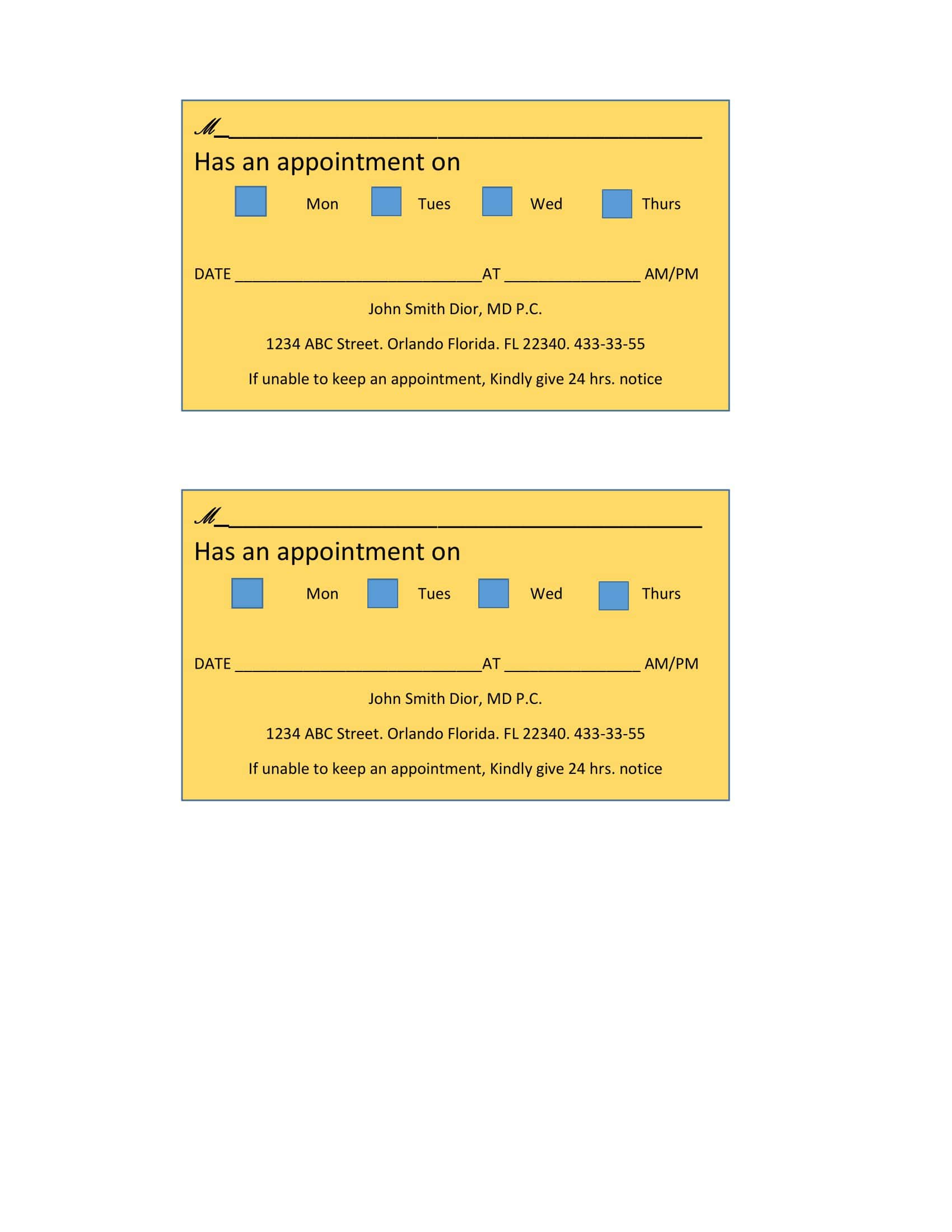





















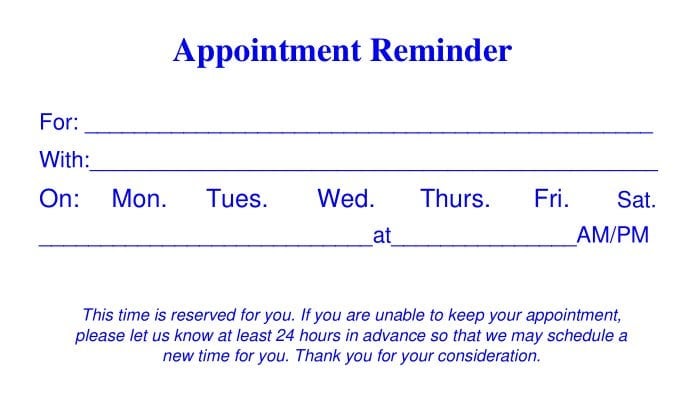


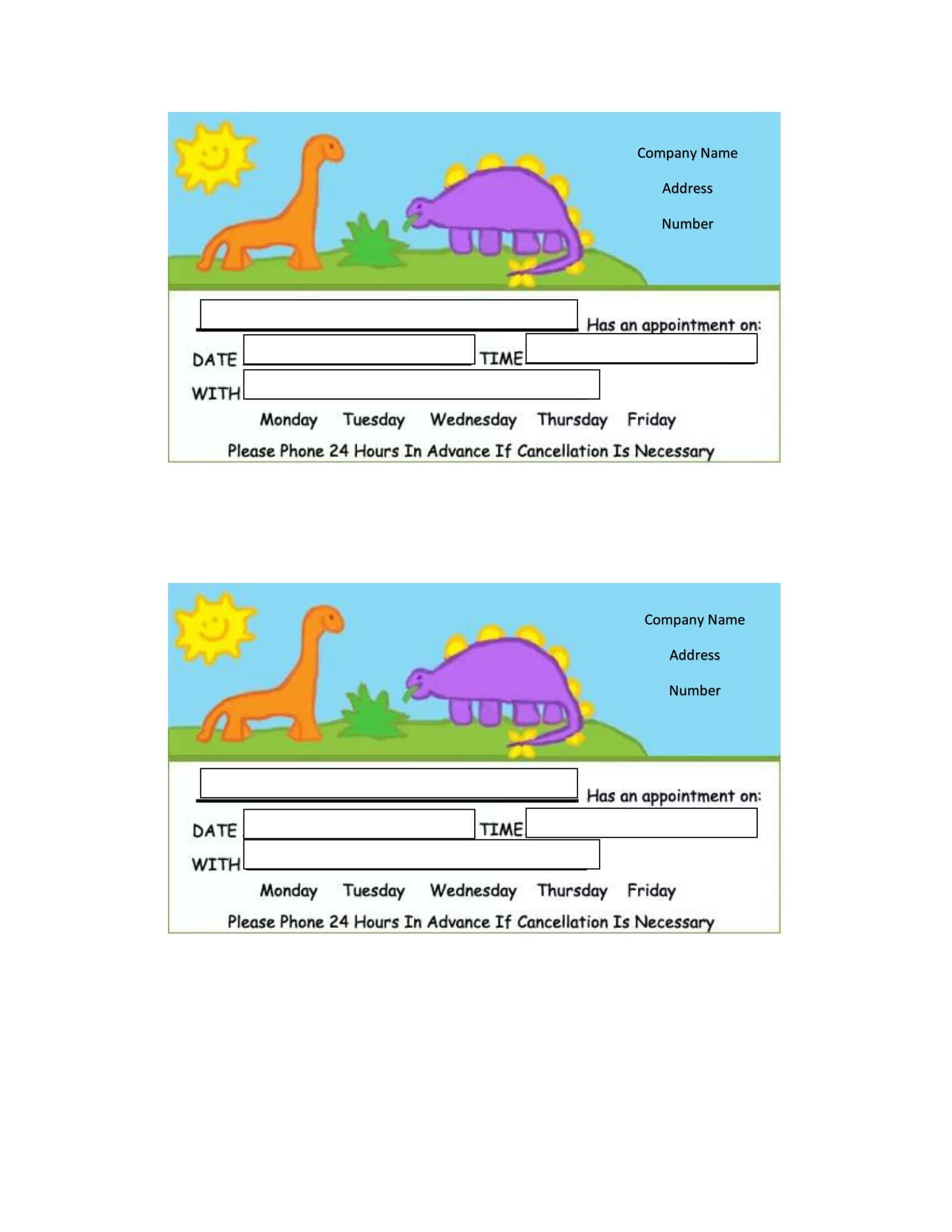

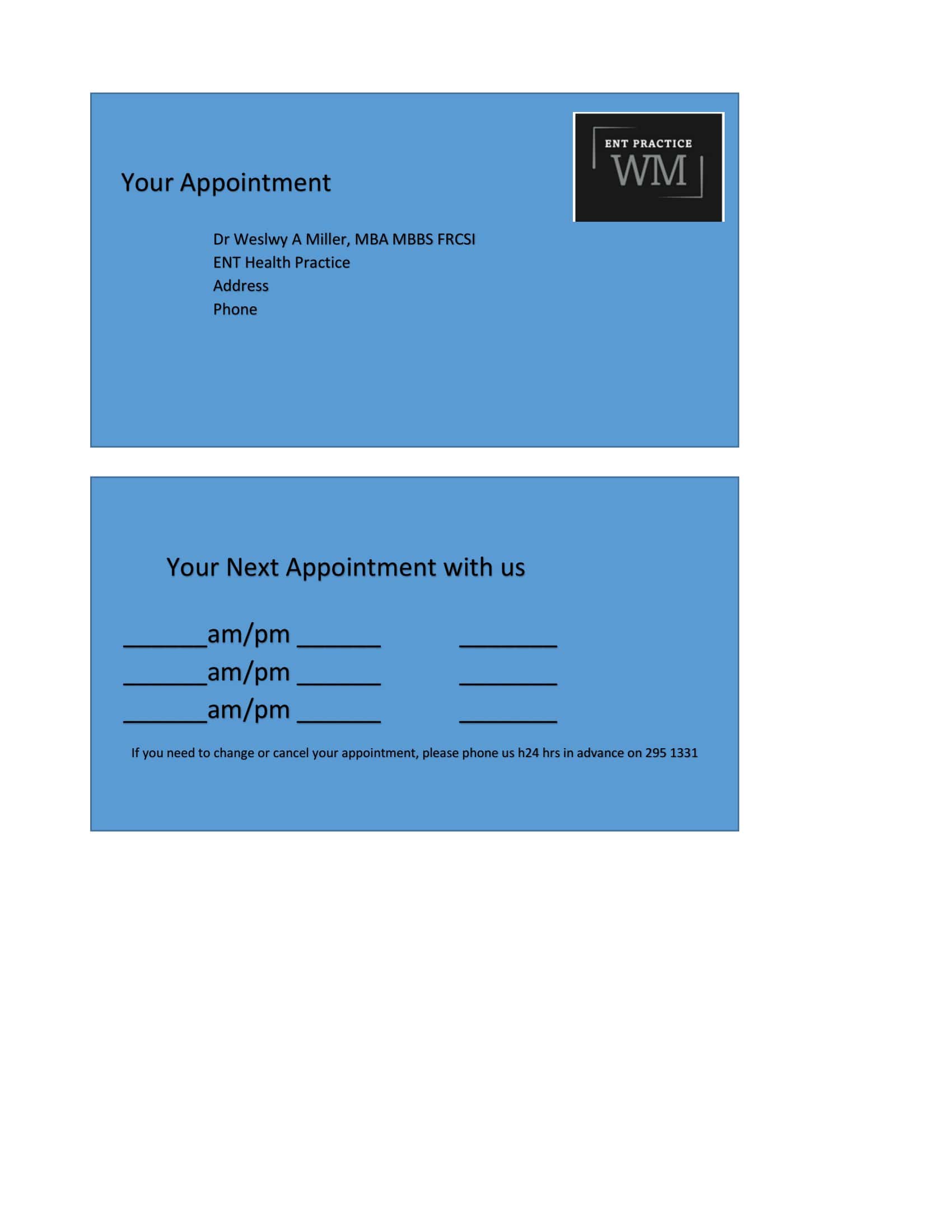

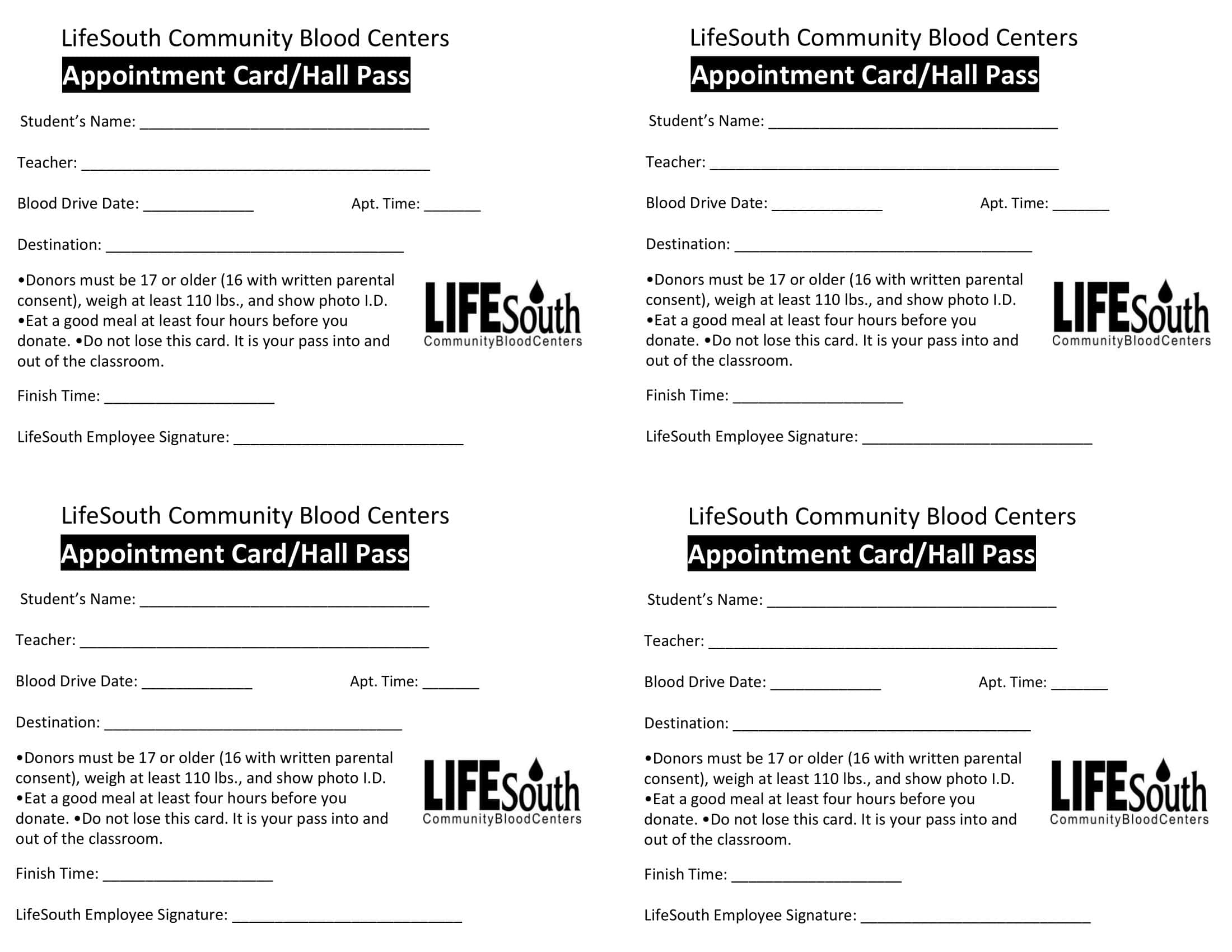

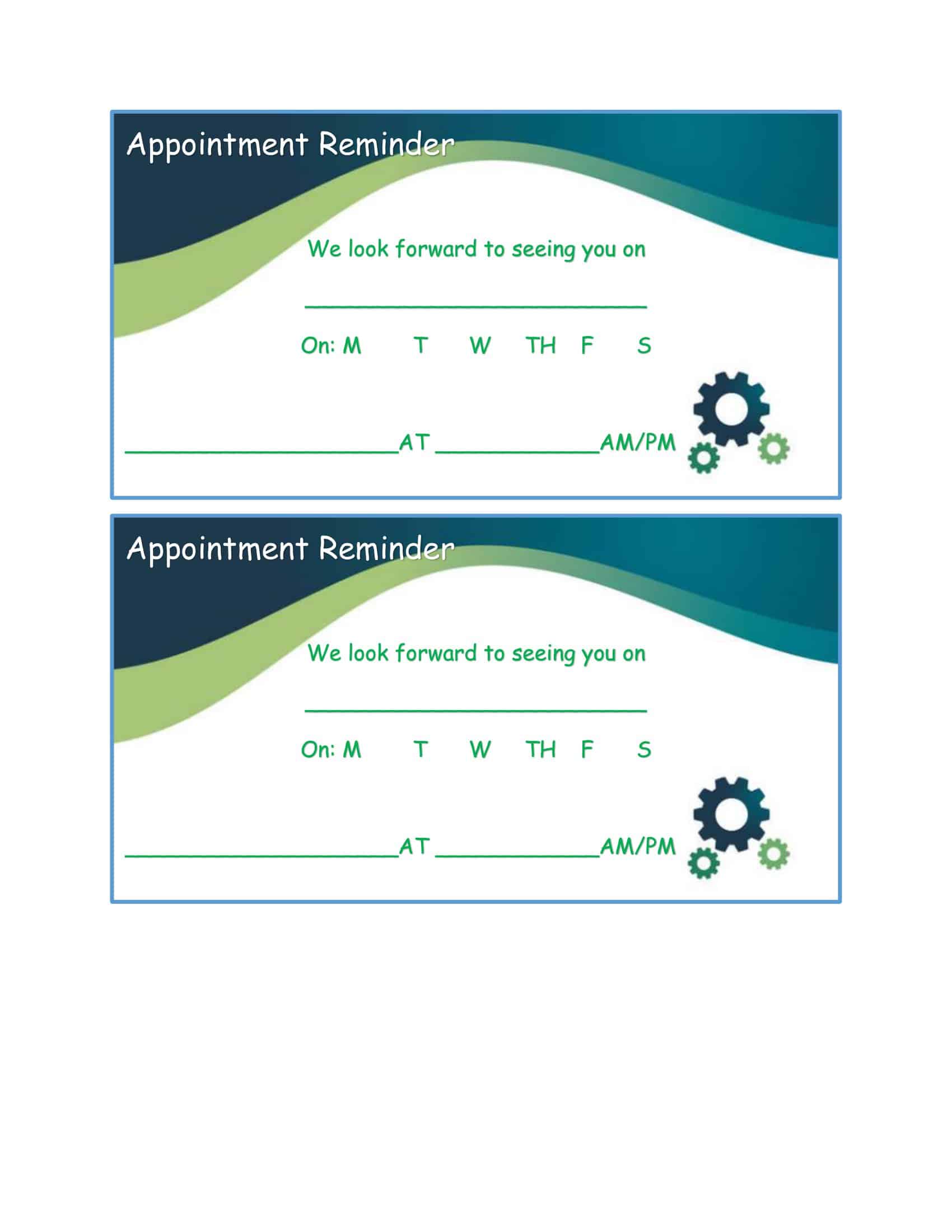


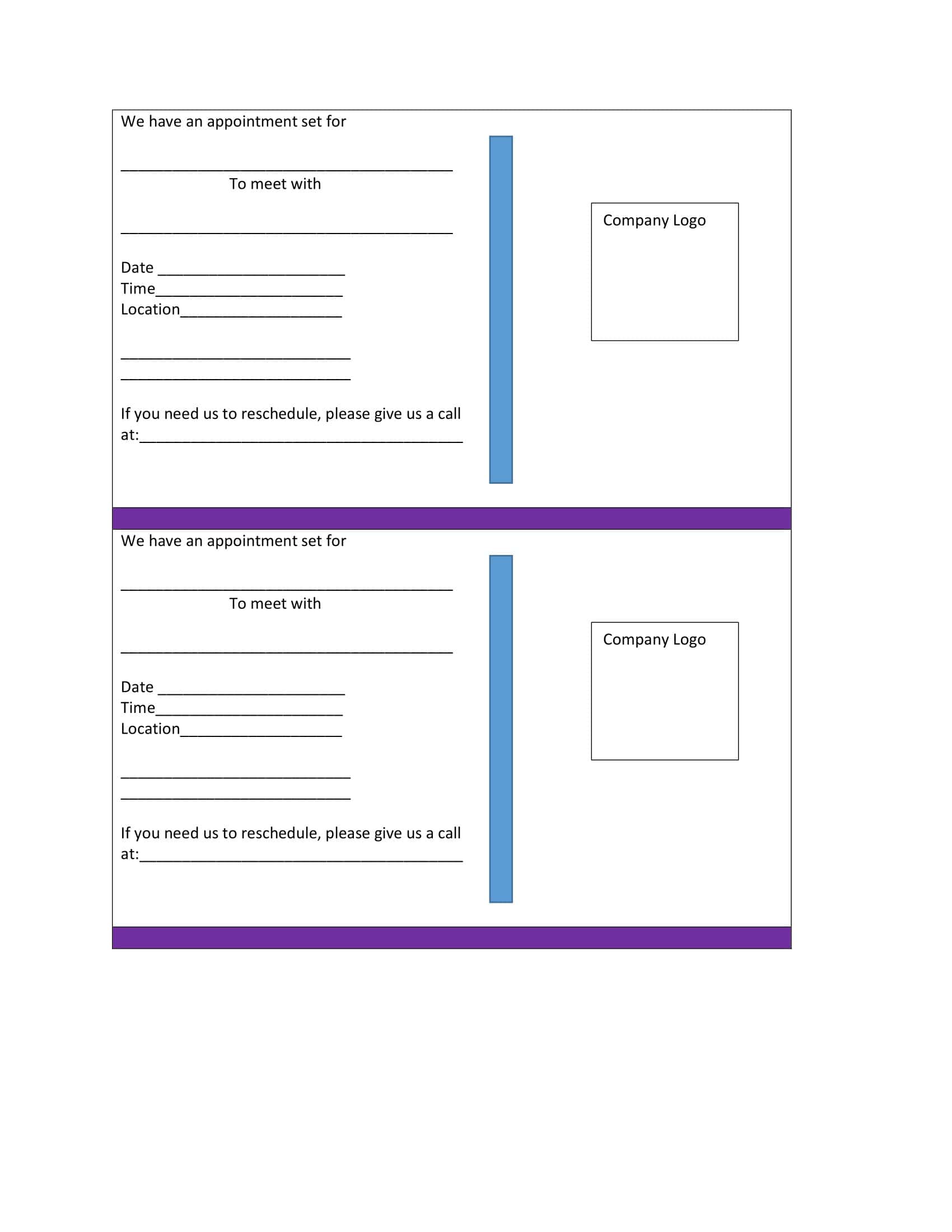

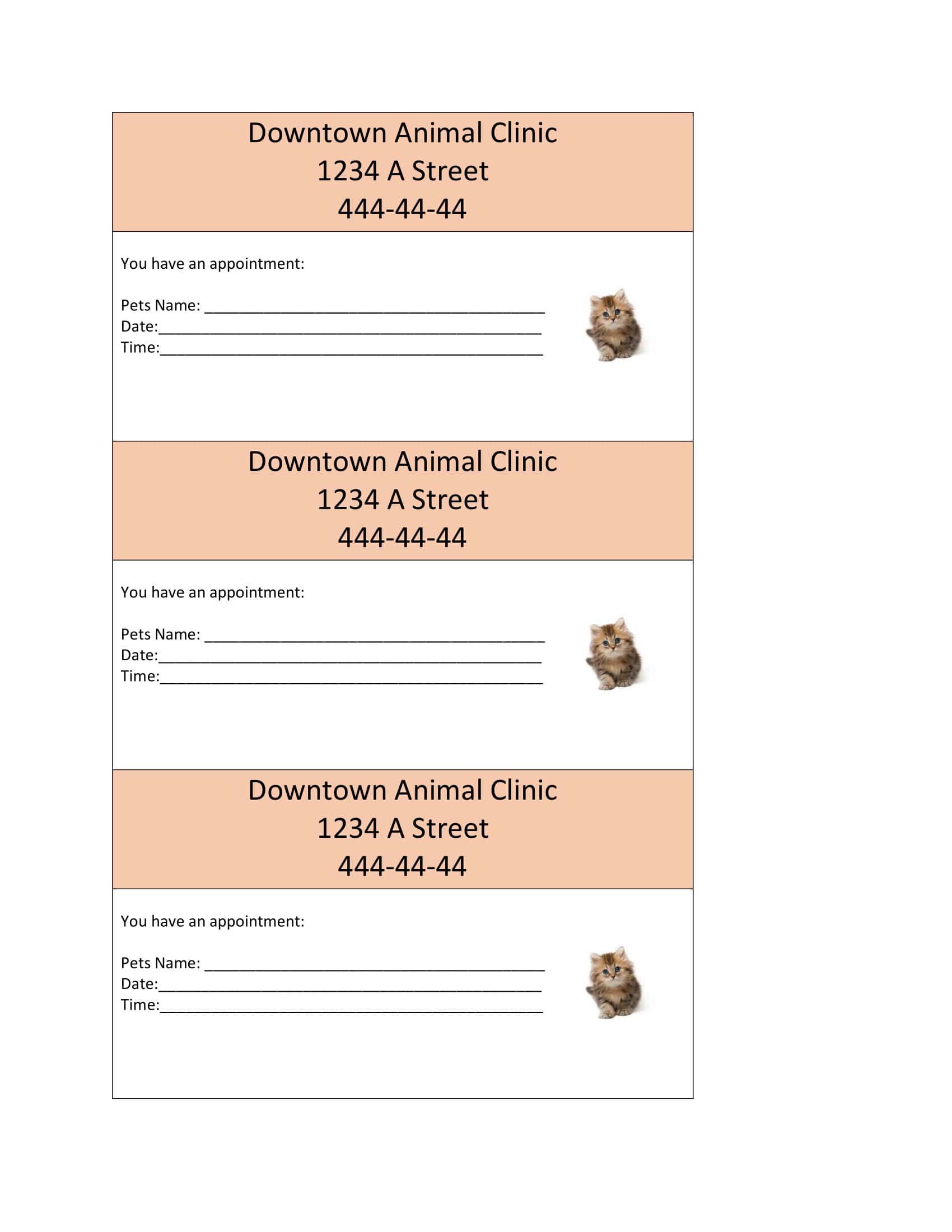






![Free Printable Roommate Agreement Templates [Word, PDF] 1 Roommate Agreement](https://www.typecalendar.com/wp-content/uploads/2023/06/Roommate-Agreement-150x150.jpg)
![Free Printable Credit Card Authorization Form Templates [PDF, Word, Excel] 2 Credit Card Authorization Form](https://www.typecalendar.com/wp-content/uploads/2023/06/Credit-Card-Authorization-Form-150x150.jpg)
![Free Printable Stock Ledger Templates [Excel,PDF, Word] 3 Stock Ledger](https://www.typecalendar.com/wp-content/uploads/2023/08/Stock-Ledger-150x150.jpg)
